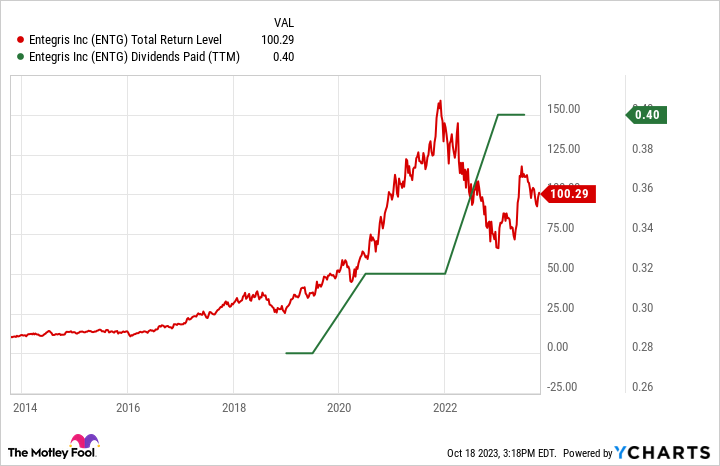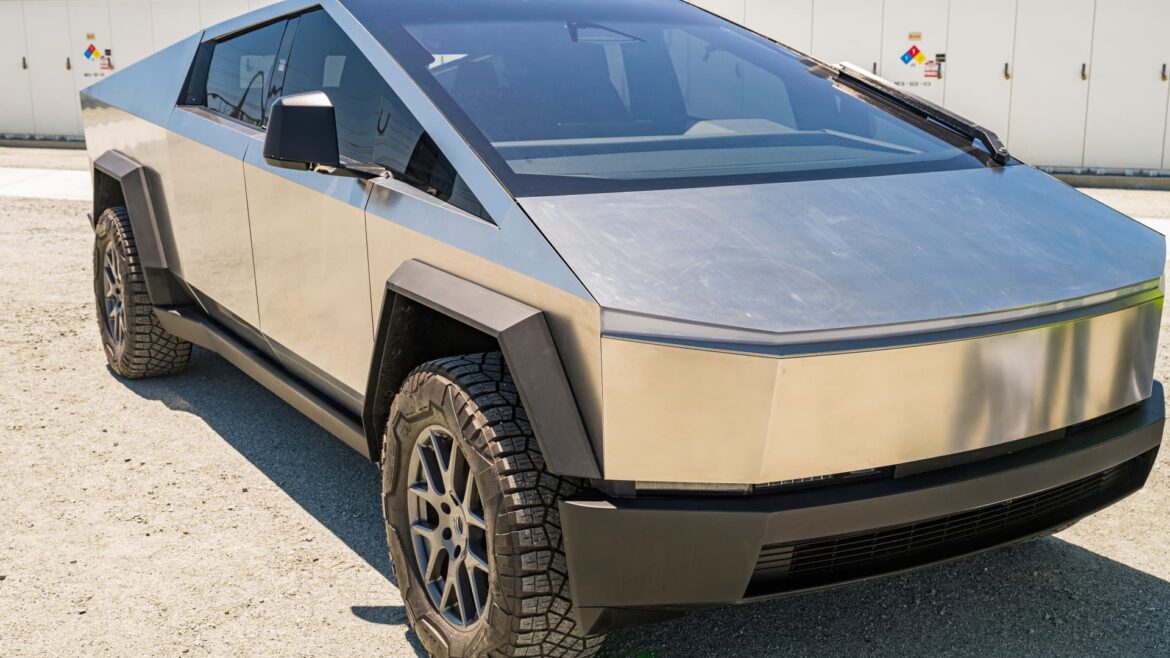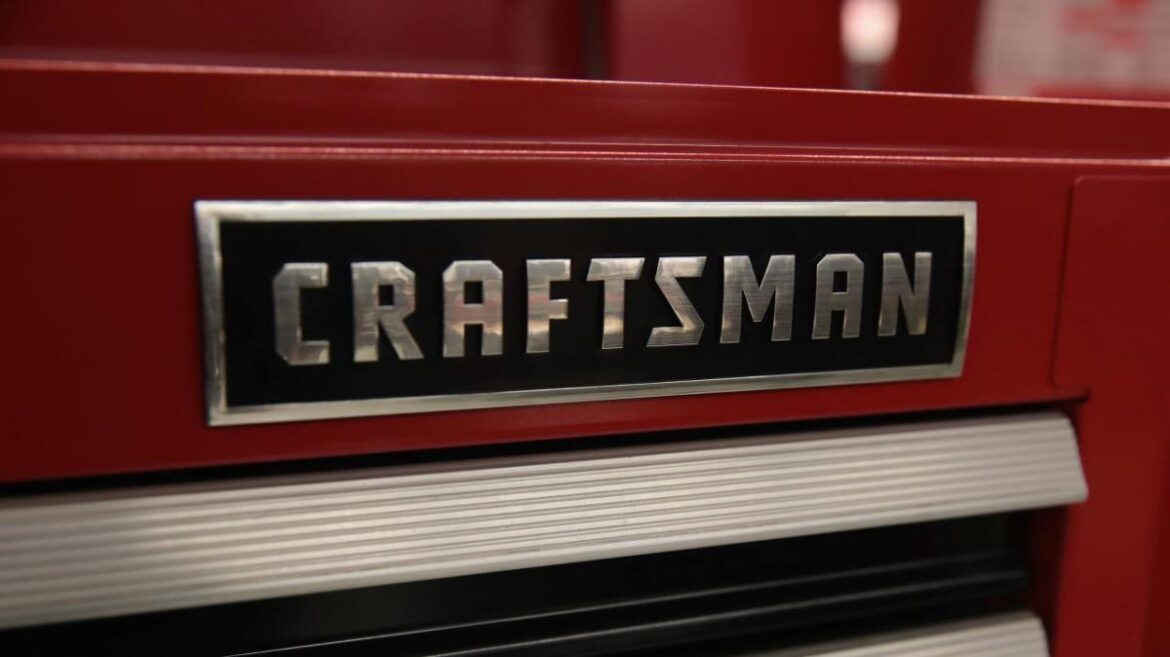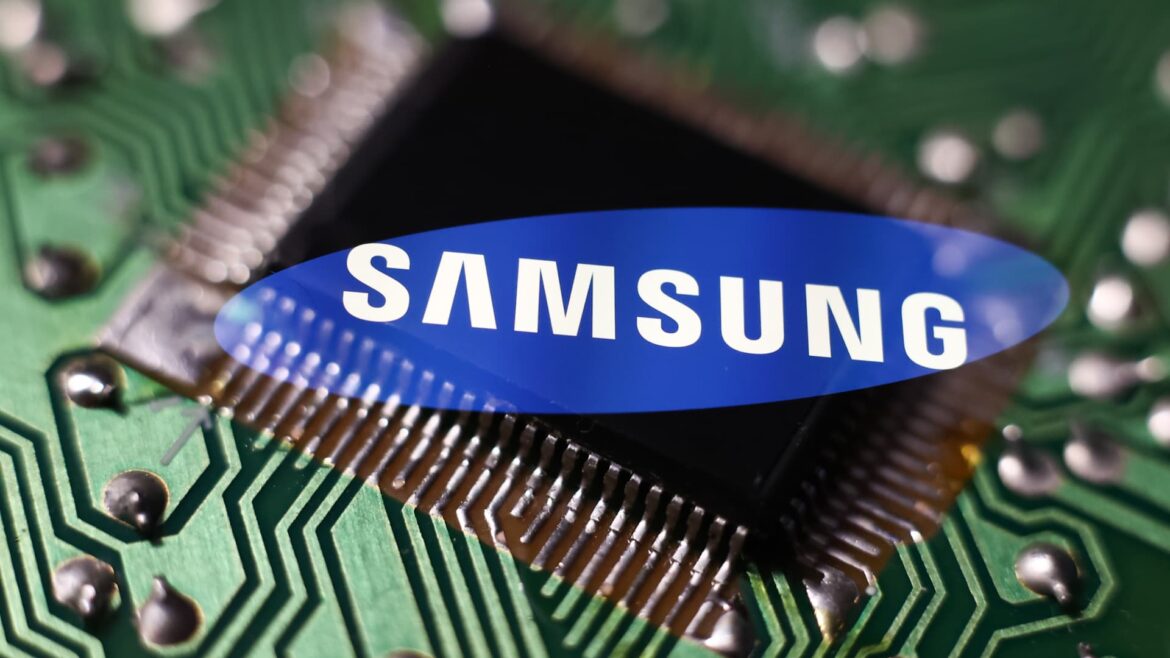‘This Has Been Going on for Years.’ Inside Boeing’s Manufacturing Mess.
Source link
manufacturing
1 Hidden Stock That Could Benefit From the Chip Manufacturing Boom — Is It a Buy Now?
There is buzz surrounding all sorts of semiconductor businesses. The world woke up to the need for more chip manufacturing during the pandemic’s height, and governments are now pouring tens of billions of dollars into bolstering their supply chains as a result.
One company that could be a big beneficiary is Entegris (ENTG -1.27%), a top supplier of materials and manufacturing processes for tech — including the chip industry. Entegris is actually one of the 30 stocks in the iShares Semiconductor ETF.
The stock has been in rally mode this year. It’s up nearly 50% as of this writing as Entegris manages the integration of its big $5.7 billion acquisition of peer CMC Materials, completed the summer of 2022. Is Entegris a buy now?
Squeezing synergies from a giant chemicals specialist
Entegris’ tie-up with CMC Materials created a giant in specialty chemicals, materials, and handling (like trays and boxes for transporting silicon wafers and chips and related semiconductor equipment) for high tech.
Manufacturing chips and computing systems is a complex process involving hundreds of steps and dozens of chemicals (besides the silicon chips are made of), and with parts needing to be transported in bulk to various locations spanning multiple continents. Entegris is deeply integrated into the global supply chain.
This is just the type of diversified industrial products company that could benefit from things like the U.S. CHIPS Act, European Chips Act, and related semiconductor manufacturing funding taking place elsewhere, like Taiwan, Japan, and China.
Entegris has been a solid long-term stock, increasing more than 900% in the last 10-year stretch, and shelling out a rising dividend since initiating a quarterly payout in 2017.
Data by YCharts.
However, a key to Entegris’ long-term success going forward will be realizing synergies from its operation following the takeover of CMC.
In the last year, operating profit margins have contracted from well over 20% to at times just a single-digit percentage, and free cash flow has dipped into the red (negative $68 million in the last reported 12-month stretch). Long-term debt sat at nearly $5.5 billion, and cash and short-term investments at just $566 million, at the end of June 2023.
Such is how it often goes when big mergers and acquisitions take place.
A long-term value in the making?
The work toward paying down debt and streamlining operations is well underway. This year, Entegris offloaded multiple segments it deemed non-strategic to its focus on tech manufacturing, including the recent $700 million sale of its “electronics chemicals” business to Japan’s Fujifilm Holdings in early October. That cash will go toward paying down debt, a good thing given that the U.S. Federal Reserve is poised to keep interest rates higher for longer.
As for free cash flow, besides whittling down redundant expenses, Entegris will also be working through elevated capital expenditures as it expands into key areas in support of its chip fab partners.
For example, Entegris recently broke ground on a new manufacturing facility in Colorado Springs, Colorado. The facility is near chip company fabs and design centers operated by Analog Devices, Broadcom, Microchip Technology, and others. As that project winds down in early 2025, free cash flow should jump higher.
At this point in its transformation, it’s difficult to stick a fair value on Entegris. The stock’s valuation using trailing 12-month earnings and free cash flow isn’t meaningful, and insight into the newly merged company’s profitability in 2024 and beyond is limited.
Shares currently trade for about 27 times analysts’ expectations for 2024 earnings per share, but take that with a grain of salt. Management will need to prove it can pay down debt and boost profit margins again after full integration of CMC Materials, as well as that recent sale to Fujifilm.
For now, I’m content to watch Entegris from the sidelines while its future earnings power becomes more clear. However, the company has a solid track record of market outperformance, and could return to its long-term winning streak.
Entegris is on my watchlist as semiconductor and computing technology manufacturing gets a big boost from federal governments all over the world in the next few years.
The Tesla Cybertruck during a tour of the Elkhorn Battery energy storage system in Moss Landing, California, June 6, 2022.
Nik Coury | Bloomberg | Getty Images
Tesla CEO Elon Musk has been promoting the company’s long-delayed, sci-fi inspired Cybertruck on social media this week. However, the electric vehicle maker still hasn’t issued final pricing and specs for the trapezoidal pickup, which it first unveiled in November 2019, and a company-wide email sent by Elon Musk implies he’s worried about “precision” in manufacturing the truck because its “straight edges” mean variations show up “like a sore thumb.”
In its second-quarter financial filing with the U.S. Securities and Exchange Commission, Tesla said its factory in Austin, Texas, was working on “tooling” for the Cybertruck, and production status was not yet active. The company also said in a shareholder deck that it was “working on equipment installation for Cybertruck production, which remains on track for initial deliveries this year.”
The company has not said when it expects to be able to mass produce the vehicle.
On Wednesday, Musk shared a post on X, formerly Twitter, with an image of the Cybertruck, saying, “Just drove the production candidate Cybertruck at Tesla Giga Texas!” In automotive manufacturing, a “candidate” is an early model of a vehicle that the manufacturer uses to gauge the quality of its production systems and vehicle assembly lines.
A Tesla promoter and fan pressed Musk for more details on the social platform Wednesday, writing in a post, “Enough with the hype, let’s get down to business. Please announce the specs, pricing and new estimated delivery event date.”
The Tesla CEO, who also owns and runs X after a $44 billion buyout last year, replied: “When we are ready to do so, we will. While I think it is our best product ever, it is an extremely difficult product to build. We are in uncharted territory, because it is not like anything else.”
Musk also sent an email to “everybody” at Tesla on Wednesday about the Cybertruck and the challenges of producing the vehicle. Tesla employees shared a copy of the email with CNBC and asked to remain unnamed since they were not authorized to speak with press about internal matters. News of the memo was previously published by Electrek.
What Musk said in the email implies that Tesla is still struggling with Cybertruck quality. Shares of Tesla were dipping slightly early Thursday following Musk’s Cybertruck comments and the email.
Here’s what the email said, as transcribed by CNBC.
From: Elon Musk
To: Everybody
Date: August 23, 2023 [time stamp removed]
Subj. Cybertruck Precision
Due to the nature of Cybertruck, which is made of bright metal with mostly straight edges, any dimensional variation shows up like a sore thumb.
All parts for this vehicle, whether internal or from suppliers, need to be designed and built to sub 10 micron accuracy.
That means all part dimensions need to be to the third decimal place in millimeters and tolerances need be specified in single digit microns.
If LEGO and soda cans, which are very low cost, can do this, so can we.
Precision predicates perfectionism.
Elon
Philadelphia Fed manufacturing gauge in expansion territory for first time in a year
The numbers: The Philadelphia Federal Reserve said Thursday its gauge of regional business activity rose to 12 in August from negative 13.5 in the prior month. Any reading above zero indicates expanding activity. This is the first positive reading after 11 straight months of contraction.
The rise in the Philly Fed index was higher than expected. Economists polled by the Wall Street Journal forecast a negative 10 reading in August.
The measure on six-month business outlook dropped 25 points in August to 3.9, its lowest level since May.
Key details: The barometer on new orders jumped 31.9 points to 16 in August. The shipments index rose 18.2 points to 5.7.
The prices paid index rose 11 points to 20.8.
The index for future general activity dropped 25 points to 3.9, its lowest reading since May. Capital spending intentions dropped 13.1 points to -4.5, leaving them just above the cycle low of -5.4, reached in April.
Big picture: Economists have been looking for a bottom in manufacturing activity and the data may be tentative signs of one.
Demand has been weak and manufacturers are struggling with higher interest rates.
Regional readings have been volatile. Earlier this week, the Empire State index showed manufacturing weakened sharply in New York State. The New York Fed’s general business conditions index fell 20.1 points to negative 19 in August.
The New York and Philadelphia Fed indices are two of the first regional manufacturing gauges that offer timely reads of the manufacturing sector.
The national ISM factory index contracted in July for the ninth straight month, rising to 46.4% from 46.% in the prior month.
What are they saying? ” We need much more convincing signals before we believe that the outlook for manufacturing is materially improving,” said Ian Shepherdson, chief economist at Pantheon Macroeconomics.
“A sustained improvement in domestic capital spending is needed if manufacturing is to escape its current rut, given the lack of any meaningful external boost from China’s re-opening,” he added,
Market reaction: Stocks
DJIA
SPX
opened higher on Thursday. The yield on the 10-year Treasury note
BX:TMUBMUSD10Y
rose to 4.31%.
Craftsman factory in Texas shows challenges of reshoring manufacturing
The unsuccessful effort to launch a highly-automated factory for Craftsman tools in the U.S. underscores the challenges American businesses face in bringing manufacturing back from overseas.
Craftsman, the world’s largest tool brand, owned by Stanley Black & Decker, initially announced in 2019 that it would build a $90 million facility employing up to 500 workers in Fort Worth, Texas. The effort was viewed as an opportunity to showcase Craftsman products being “Made in the U.S.A.” with cutting-edge manufacturing technologies to make the automated factory competitive with overseas facilities that use more manual processes.
The factory was slated to be in production 18 months after the groundbreaking. However, the pandemic and supply chain challenges threw those plans into disarray, and deficiencies with the technology intended to help automate its manufacturing processes prevented the plant from ever reaching its full potential. In March 2023, Stanley announced that the Craftsman plant in Fort Worth would be shuttered.
CHIPMAKERS PUSH BACK ON US RESTRICTIONS ON SEMICONDUCTOR EXPORTS TO CHINA

A spokesperson for Stanley Black & Decker told FOX Business, “We endeavored to make Craftsman mechanics tools in a new and innovative way. The events of Covid and supply chain challenges, coupled with technology that did not meet our expectations, resulted in the discontinuation of operations.”
Former employees told the Wall Street Journal that the pandemic prevented proper testing of machinery that was integral to the company’s automated vision for the factory. That prompted the company to choose between making adjustments by getting new tooling from overseas in the hopes of fixing it – a process that could take weeks – or running the machine at half capacity, which would have undercut its cost-effectiveness.
TESLA COMPLETES FIRST CYBERTRUCK AFTER YEARS OF DELAYS
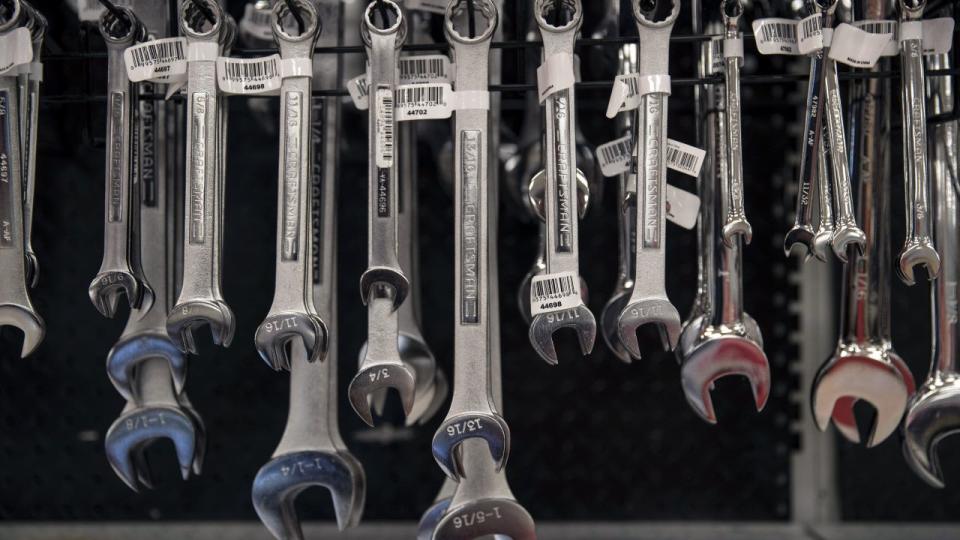
As planned, the factory was to produce sockets, ratchets and wrenches. But issues with heat treating the tools, which sometimes came out of the machinery with excess metal that made the tools misshapen, inhibited the factory’s output. Former employees including tooling designer Greg Heltne told the Wall Street Journal that while the factory made thousands of sockets, shortages of ratchets and wrenches had an impact on sales.
“When the customer says, ‘I want everything I ordered’ and we can’t deliver it, there’s not much that can be done,” Heltne told the Journal.
AI HELPING REMOVE CHINESE GOODS MADE WITH UYGHUR FORCED LABOR FROM CORPORATE SUPPLY CHAINS
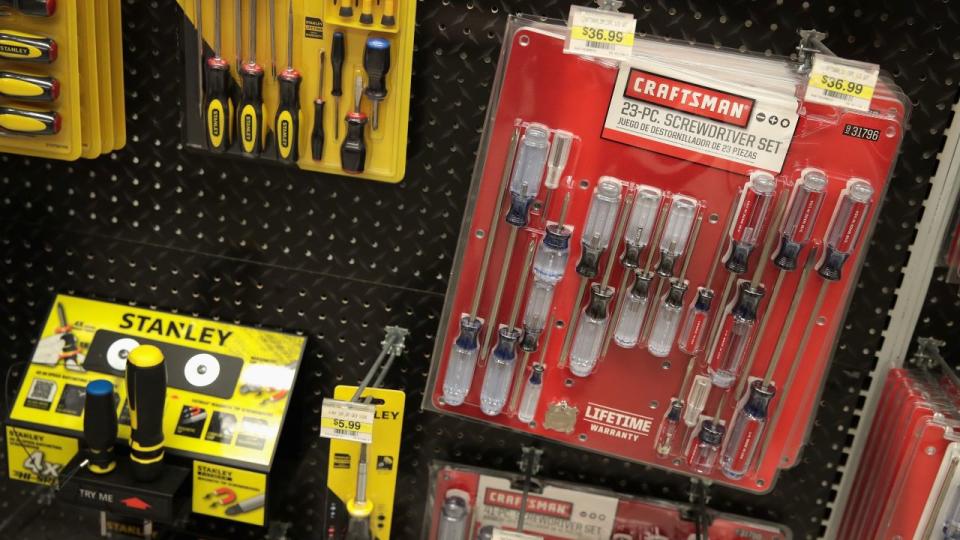
Craftsman’s corporate parent company, Stanley, was forced to make cutbacks in 2022 as its stock fell in part due to a decline in tool sales from their pandemic highs which caused inventory to pile up. That led to layoffs at the Fort Worth facility, which had about 175 workers – well short of the 500 employees originally envisioned – at the time the shutdown was announced in March.
The Fort Worth factory had been projected to make 60 million tools per year, but after the plant was closed it was unclear whether full sets of Texas-made tools made it to consumers. A Wall Street Journal reporter on Monday bought an 88-piece set at a Lowe’s near Chicago which contained a card reading, “Forged in Texas.” Though the set was purchased for $89.98, the relative scarcity of tool sets made at the plant has turned them into collectors’ items, with some eBay vendors seeking double that amount.
Craftsman was acquired by Stanley from Sears in 2017 for $900 million, which then-CEO James Loree said was a chance to “re-Americanize” the brand. Several other U.S. facilities belonging to Craftsman and rival toolmaking brands continue to produce tools, although they generally involve more manual tasks in the manufacturing processes than what was attempted at the Fort Worth facility and more in line with Craftsman tools made at plants in Asia.
Nick Pinchuk, CEO of premium tool brand Snap-on, told the Wall Street Journal that the company’s U.S. factories had a roughly 100-to-1 ratio of workers to robots in 2010 which has shrunk to 8-to-1 through a process that helped the company better understand which roles are better suited for humans versus machines.
“Sometimes the ease of installing automation is a little bit overestimated,” Pinchuk told the Journal. “Where that comes from is, people don’t really understand how the product is made in the first place.”
Samsung’s brand is everywhere. From Galaxy phones and smart TVs to washing machines and refrigerators, the company says its products can be found in nearly three-quarters of U.S. households.
But Samsung is much more than gadgets and appliances, and there’s another reason why it’s one of the world’s most valuable companies. It’s the second-biggest maker of chips that are powering so many popular devices.
For more than three decades, Samsung has been a leader in memory chips, which are used for digital data storage. But that’s been a market in turmoil. Over the last year, prices for memory chips have taken a dive, and they’re expected to fall up to 23% more in the current quarter. In April, Samsung reported dismal earnings for the first quarter, with profit plunging to its lowest level since 2009.
Samsung responded by cutting production of memory chips. Elsewhere in the industry, smaller rival Micron said recently that it expects to slash 15% of its workforce.
Amid the wreckage, the giant company has found growth in another corner of the semiconductor market, doubling down on its foundry business, the side that makes custom chips for massive customers like Qualcomm, Tesla, Intel and Sony, as well as thousands of smaller players.
Samsung is building a $17 billion chip fabrication plant, or fab, in Taylor, Texas, where it’s promised to start the first U.S. production of advanced chips next year. In February, applications opened for companies like Samsung to get their cut of the $52.7 billion CHIPS and Science Act, passed by lawmakers last year with the aim of bringing chip manufacturing to the U.S. after 30 years of market share losses to Asia.
Samsung is also adding capacity in its home country of South Korea, spending $228 billion on a mega cluster of five new fabs that are scheduled to come online by 2042.
“They’re spending and spending and spending,” said Dylan Patel of research and consulting firm SemiAnalysis. “And why is that? So they can catch up on technology, so they can continue to maintain their leadership position.”
Samsung’s $17 billion new chip fab is under construction in Taylor, Texas, on April 19, 2023.
Katie Brigham
‘We do not settle’
Samsung is one of only three companies that manufacture the world’s most advanced chips, ranking second behind Taiwan Semiconductor Manufacturing Company and ahead of Intel.
Now Samsung is setting its sights on catching TSMC.
“We do not settle to be No. 2,” said Jon Taylor, Samsung’s corporate vice president of fab engineering, in an interview. “Samsung is never satisfied with No. 2 as a business, as a company. We’re very aggressive.”
The company announced an ambitious new road map in October, pursuing a goal to triple capacity of leading-edge manufacturing, and to make industry-leading 2-nanometer chips by 2025 and get them down to 1.4-nanometer by 2027.
“If Samsung hits their targets, they’ll leapfrog ahead of TSMC, but that’s a big if,” Patel said. “TSMC is the only one that the industry trusts to hit their road map.”
CNBC recently went inside Samsung’s Austin chip fab, for the first in-depth tour given on camera to a U.S. journalist. While there, we got a rare interview with the head of Samsung’s U.S. chip business, Jinman Han.
A 34-year veteran of the company, Han’s U.S. oversight includes the foundry operations and the memory chips business.
“We really want to be a bedrock for U.S. industry,” Han told CNBC.
Samsung got its start in 1938 as the Samsung Sanghoe Trading Company, founded by Lee Byung-chull in Korea.
Samsung
Samsung got its start 85 years ago, when founder Lee Byung-chull created it as a trading company for exporting fruit, vegetables and fish in Korea.
“His vision was for our company to be eternal, strong and powerful,” Han said. “So, he chose the name Samsung, which literally means three stars.”
To survive two major wars, the company diversified into industries like textiles and retail. Samsung Electronics was established in 1969, the first Samsung TV came out in 1972, and two years after that Samsung bought Hankook Semiconductor in a bold effort to establish the vertically integrated consumer electronics giant the company is today.
Samsung opened its first U.S. offices in New Jersey in 1978. By 1983, it was making 64KB dynamic random-access memory (DRAM) chips, which were commonly used in computers, and the company had a new U.S. office in Silicon Valley.
Lee Kun-hee took over after his father’s death in 1987, and Samsung’s first mobile phone came a year later. And now Samsung is the world’s biggest smartphone provider, going head-to-head with Apple.
Just a decade after making its first memory chip, Samsung was coming to market with a version that had 1,000 times the capacity. It gained international acclaim in 1992 with the world’s first 64MB DRAM chip, placing the company squarely in first place in memory, where it remains today.
“Its presence is so ubiquitous in South Korea that they call their country the Republic of Samsung,” said Geoffrey Cain, author of the book “Samsung Rising,” published in 2020.
Samsung started making chips in the U.S. with its fab in Austin, Texas, which broke ground in 1996. It opened a second fab in the Texas capital city in 2007. Today, Samsung’s Austin operation is entirely devoted to foundry.
Samsung workers in the cleanroom of the company’s Austin chip fab on April 19, 2023.
Samsung
Samsung’s expansion has brought with it some legal conflict.
In 2018, the company finally ended a seven-year legal battle with Apple over whether Samsung copied the iPhone. Terms weren’t disclosed.
“Apple got a payment from Samsung, so Apple technically won,” Cain said. “But when you add up all the legal costs, all the fighting, all those years, it was just a neutral zero on zero for both sides.”
Challenges haven’t been limited to the courtroom.
In South Korea, protests have erupted around Jay Y. Lee, the third generation of Samsung’s founding family to take the helm. He served time in prison for bribery before being pardoned in August and becoming executive chairman in October.
And during the pandemic, Samsung was hurt by the global chip shortage as demand peaked and the supply chain was disrupted.
“It was really painful,” Han said. “When you look at your customers asking for more chips, but there’s no way you can provide that, it was so painful.”
That dynamic is changing. As consumers rein in their spending in the face of rising inflation, demand for memory chips has weakened sharply. Han said Samsung’s internal data analysis shows “the market will rebound possibly by end of this year.”
Geopolitical tug of war
Investors have already been coming back. The stock dropped almost 30% last year, alongside a broader decline in the global tech industry. The shares are up 28% this year and hit a 52-week high on June 5, on the Korea Stock Exchange. Morgan Stanley recently named it a top pick.
Part of the rally may reflect the latest chapter in the geopolitical chip war between China and the U.S.
In May, China banned products from U.S. memory maker Micron, which led to a stock pop for Samsung. The U.S. also granted Samsung a one-year waiver to operate its two chip fabs in China, despite new rules in October that stop many chip companies from exporting their most advanced technology to the world’s second-biggest economy.
Samsung says it’s adding capacity in Taylor, Texas, which is northeast of Austin, because of U.S. demand. More than 90% of advanced chips are currently made in Taiwan.
“Bringing Taylor on board is just going to increase their ability to source their chips domestically and not have to go into areas of the world where they may have some discomfort,” said Samsung’s Jon Taylor.
Over the last three decades, the U.S. share of global chip production has plummeted from 37% to just 12%. That’s largely because estimates show it costs at least 20% more to build and operate a new fab in the U.S. than in Asia, where labor is cheaper, the supply chain is more accessible and government incentives are far greater.
South Korean President Yoon Suk-yeol looks on as U.S. President Joe Biden delivers remarks during a visit to a semiconductor factory at the Samsung Electronics Pyeongtaek Campus in Pyeongtaek, South Korea, May 20, 2022.
Jonathan Ernst | Reuters
Power and water
For Samsung’s Texas expansion, environmental concerns are big and growing.
The highest-price pieces of equipment Samsung will bring into Taylor are probably the $200 million EUV lithography machines made by ASML. They are the only devices in the world that can etch with enough precision for the most advanced chips.
Each EUV machine is rated to consume about 1 megawatt of electricity, which is 10% more than the previous generation. One study found Samsung used more than 20% of South Korea’s entire solar and wind power capacity in 2020.
“Electricity is the lifeblood of a semiconductor fab in a sense,” said Patel of SemiAnalysis. “There have been multiple instances where electricity has gone out and companies have had to scrap months of production.”
Texas’ energy grid is largely cut off from its neighbors, limiting its borrowing power across state lines. In 2021, that grid failed during an extreme winter storm, leaving millions of Texans without power and causing at least 57 deaths.
“I already signed 12 laws to make the power grid more reliable, more resilient and more secure,” Texas Republican Gov. Greg Abbott told CNBC in April. “And so we can definitely assure any business moving here they will have access to the power they need, but also at a low cost.”
Water is another major need for chip fabs. In 2021, Samsung used about 38 billion gallons of water to make its chips. Roughly 80% of Texas remains stricken by drought.
“We have the Texas Water Board that’s working on that and legislation that we’re working on this session to make sure that with a growing population in Texas, we will be able to provide for the water needs, not just of businesses, but also for our growing population,” Abbott said.
Samsung told CNBC its goal in Austin is to reuse more than 1 billion gallons of water in 2023. At the new Taylor fab, it aims to reclaim more than 75% of the water used.
Of late, all the hype in technology has been around artificial intelligence models to power services like OpenAI’s ChatGPT. Those applications require even more powerful processors, made primarily as of now by Nvidia.
“There are more and more people around the world who can make memory chips,” Cain said. “To stay ahead of the game, you’ve got to get into the newer logic technologies.”
Cain said he sees Samsung “diving deeper into the logic chip segment. So, [that’s] the AI chips, the future applications for semiconductor technology.”
When asked about what’s next, Samsung’s Taylor said the company eventually plans to add more chip manufacturing capacity at its 1,200-acre site in Texas.
“We currently just have one fab announced there,” he said. “But plenty of room for more.”
Watch the video to go behind the scenes at Samsung’s Austin chip fab and the building project in Taylor, Texas.



